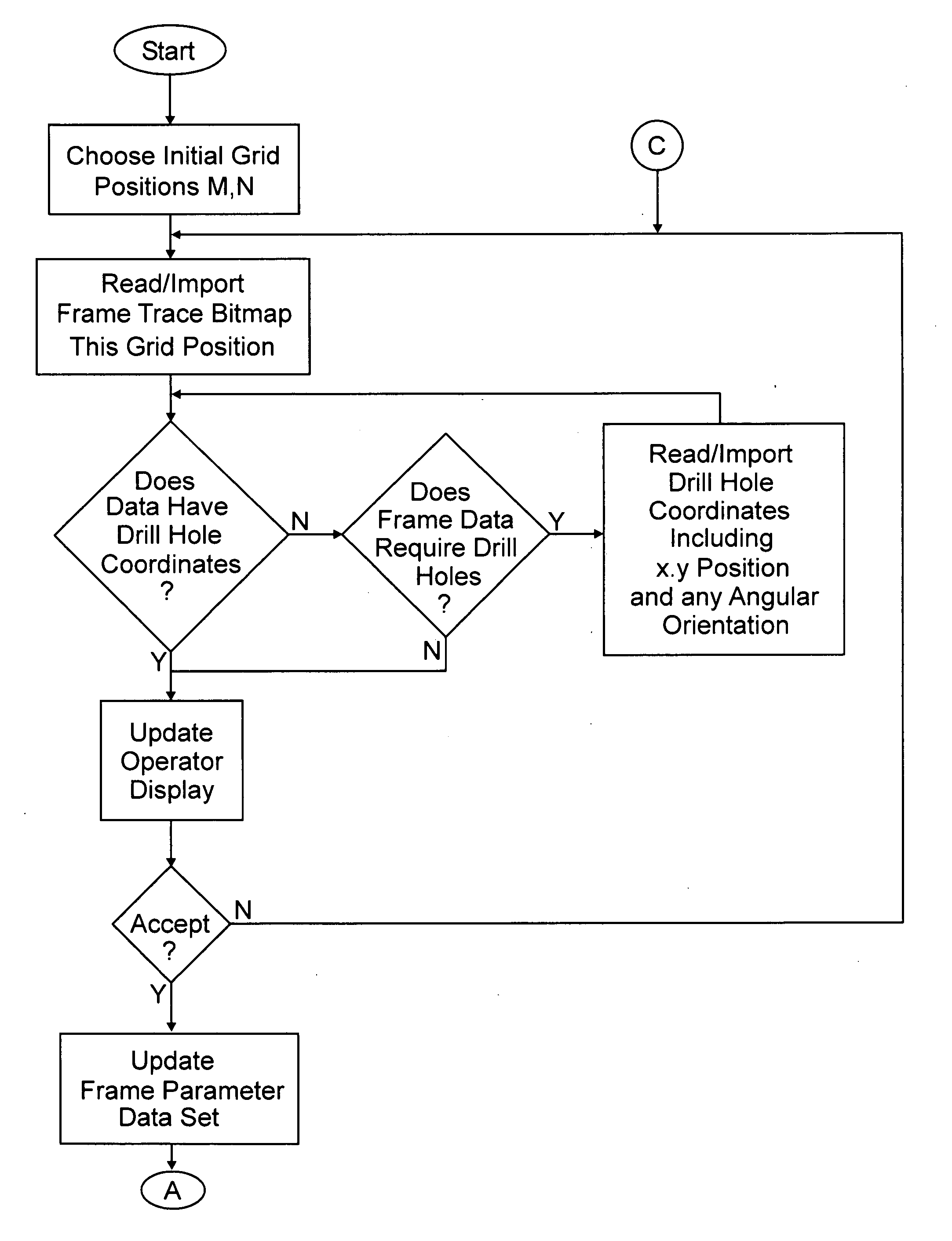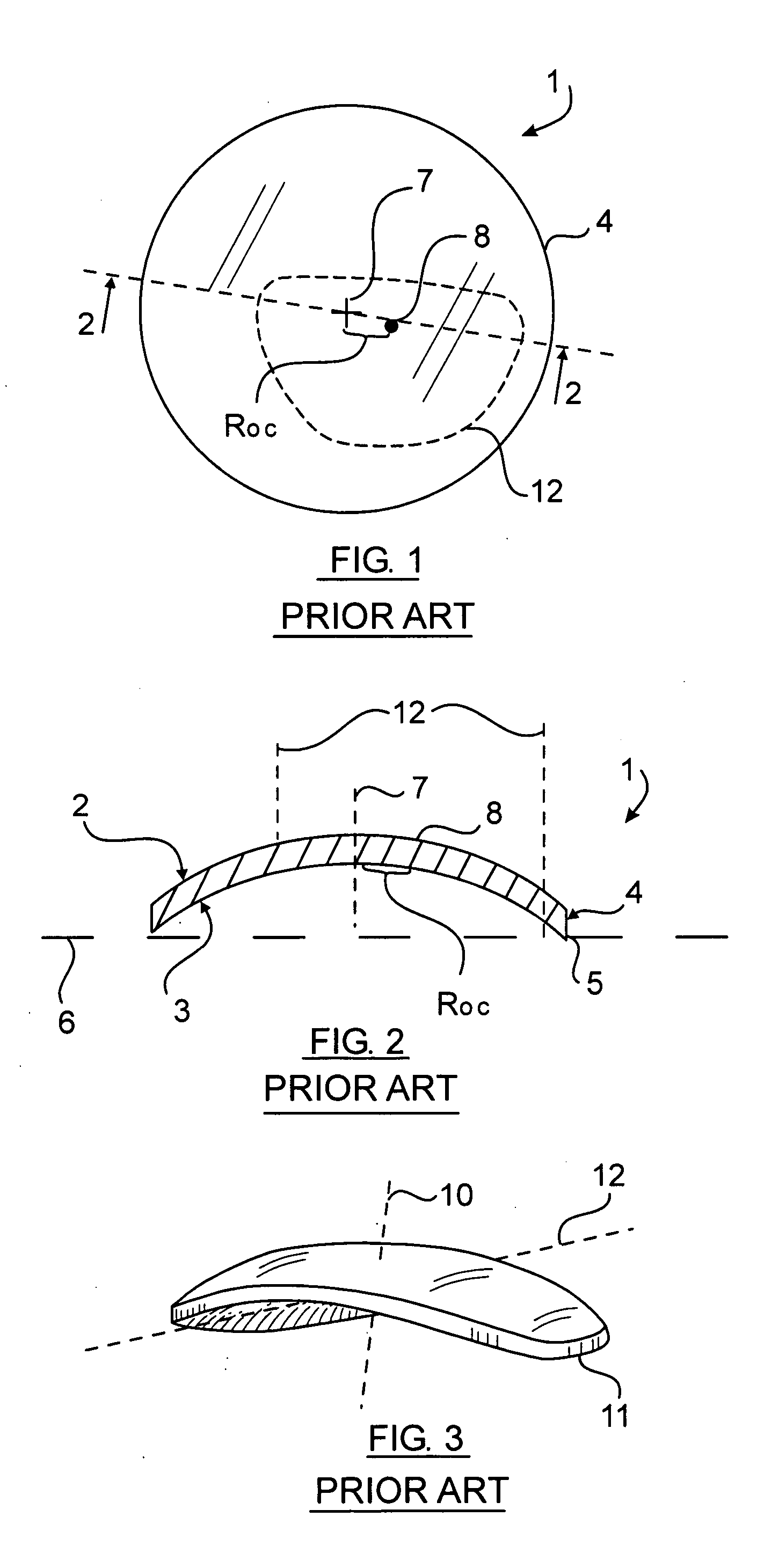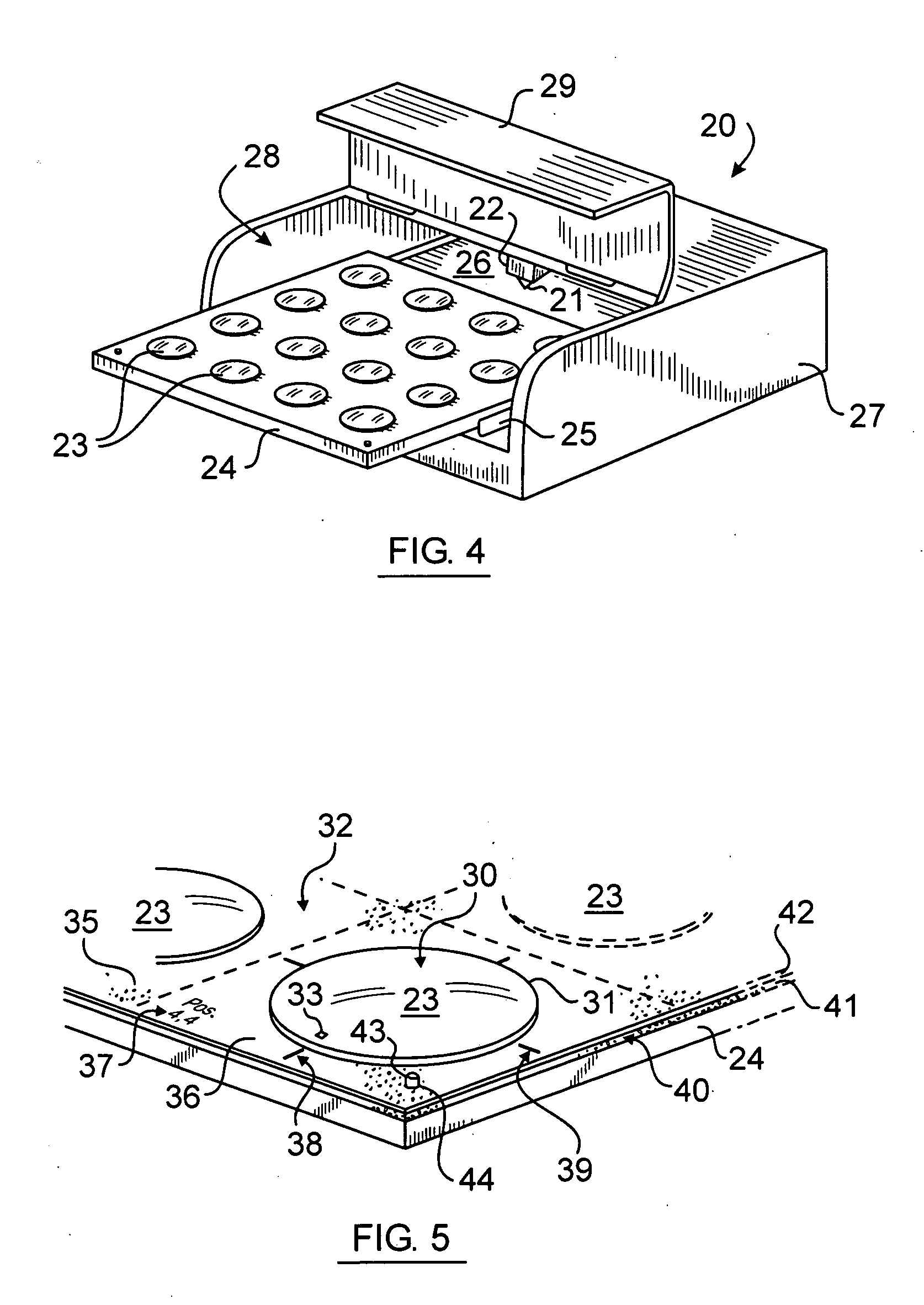Automated laser cutting of optical lenses
a laser cutting and optical lens technology, applied in the field of optical lens manufacturing, can solve the problems of different types of lens blanks, time-consuming process, and individual handling of lenses, and achieve the effect of enhancing the carrying of dyes or tints
- Summary
- Abstract
- Description
- Claims
- Application Information
AI Technical Summary
Benefits of technology
Problems solved by technology
Method used
Image
Examples
Embodiment Construction
[0032] Referring now to the drawings, there is shown in FIG. 4 a laser-based optical lens blank edging device 20 having a horizontally translatable cutting laser 21 mounted upon an XY movable carriage 22 and oriented to emit a cutting beam for edging a plurality of lens blanks 23 temporarily secured upon a holder or bed 24 slidingly mounted to a drawer mechanism 25 for extraction from the internal cavity 26 of the device housing 27 through an opening 28 which is closed by a hinged lid 29 during operation. The device can be adapted from existing flatbed-style laser engravers such as disclosed in Garnier et al. U.S. Pat. No. 4,985,780 incorporated herein by this reference. A preferred laser engraver is the VENUS 35 brand engraver, commercially available from GCC USA company of Walnut, Calif.
[0033] Referring now to FIG. 5, there is shown a right / front corner portion of the bed 24 carrying a plurality of lens blanks 23. Each lens blank 23 is generally domed shape having a convex upper ...
PUM
| Property | Measurement | Unit |
|---|---|---|
| Angle | aaaaa | aaaaa |
| Angle | aaaaa | aaaaa |
| Angle | aaaaa | aaaaa |
Abstract
Description
Claims
Application Information
 Login to View More
Login to View More - R&D
- Intellectual Property
- Life Sciences
- Materials
- Tech Scout
- Unparalleled Data Quality
- Higher Quality Content
- 60% Fewer Hallucinations
Browse by: Latest US Patents, China's latest patents, Technical Efficacy Thesaurus, Application Domain, Technology Topic, Popular Technical Reports.
© 2025 PatSnap. All rights reserved.Legal|Privacy policy|Modern Slavery Act Transparency Statement|Sitemap|About US| Contact US: help@patsnap.com



